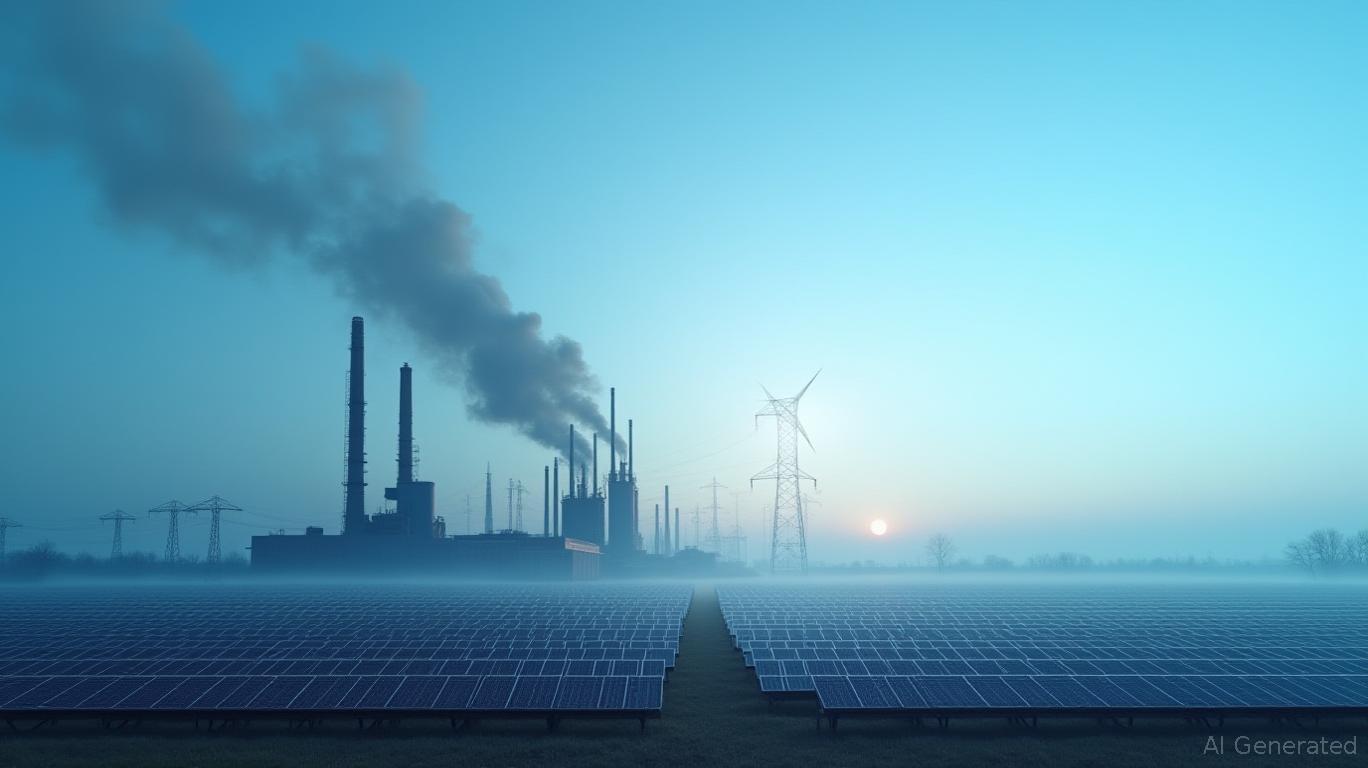Coal's Last Stand: Navigating Policy Risk and Renewable Transition in Energy Investments
The Trump administration's May 2025 emergency declaration to extend the operations of aging coal plants—most notably Michigan's J.H.
facility—has sent shockwaves through the energy sector. What began as a legal showdown over grid reliability has now become a critical test for investors: Will this policy pivot derail the renewable energy transition, or is it a fleeting blip in the inevitable shift to clean power? The answer hinges on understanding the interplay of regulatory risks, market dynamics, and long-term energy trends. Here's how to position your portfolio for this high-stakes pivot.The Coal Revival: A Policy-Fueled Anomaly
The Department of Energy's (DOE) orders to keep the 1,560-MW J.H. Campbell and Pennsylvania's Eddystone plants open until August 2025 defy market logic. Both facilities were slated for closure due to rising renewable competition and aging infrastructure. Yet the DOE cites “grid reliability concerns” under Section 202(c) of the Federal Power Act—a provision critics argue is being weaponized to prop up politically favored industries.

The move has sparked immediate backlash. Michigan's Public Service Commission, which approved the plant's closure after a rigorous review, called the DOE's actions a “power grab.” Legal challenges from the Sierra Club and NRDC frame the extension as an “illegal abuse of emergency powers,” citing the plant's annual 44 premature deaths linked to pollution. For investors, the takeaway is clear: This is not just an energy policy shift—it's a regulatory war with uncertain outcomes.
Policy Risk: The Double-Edged Sword for Fossil Fuel Assets
While coal-heavy utilities like Consumers Energy (CIG) or Dominion Energy (D) might see short-term gains from federal backing, the risks are profound.
- Legal Uncertainty:
- The DOE's overreach faces lawsuits challenging its authority under the Federal Power Act. If courts side with states or environmental groups, coal plants could face sudden shutdowns, wiping out their value.
Market Forces:
Coal's 16% share of U.S. energy generation in 2023 is already shrinking, outpaced by renewables (now 22%) and gas (38%). The Campbell plant's forced operation costs Michigan households an estimated $50 million annually in higher bills—a political liability as renewables grow cheaper.
ESG Reputational Damage:
- Funds and investors divesting from fossil fuels (like BlackRock's 2023 coal exit) will avoid utilities tied to coal. ESG funds face a reckoning: Those holding coal stocks risk losing institutional investors who demand alignment with climate goals.
Renewables: The Unstoppable Trend—With a Bump in the Road
The coal revival is a tactical setback for renewables, not a strategic defeat. Consider the data:
- Solar and Wind Costs:
- Solar energy costs have dropped 90% since 2010; wind is now cheaper than coal in most U.S. regions.
Grid Modernization:
The Midwest's grid operator, MISO, already confirmed sufficient capacity without the Campbell plant—a point opponents are leveraging in court. Utilities like NextEra Energy (NEE) are building storage and smart grids to replace fossil fuels, rendering coal's “reliability” argument obsolete.
Global Momentum:
- Even if the U.S. backtracks, China and Europe are pouring $3 trillion into renewables by 2030. Companies like Enphase Energy (ENPH) or Vestas Wind Systems (VWS) dominate this growth.
Investment Strategy: Play Defense on Coal, Double Down on Renewables
The policy volatility creates both risks and opportunities. Here's how to navigate it:
- Short Coal-Dependent Utilities:
Target utilities with high coal exposure (CIG, D) or coal ETFs (KOL). Their valuations are vulnerable to legal reversals or consumer backlash.
Long Renewable Leaders:
- NextEra Energy (NEE): The world's largest renewable operator, with a 97% ESG score.
- Pattern Energy (PEGI): A pure-play wind/solar developer with 7.2 GW of projects in the U.S. and Mexico.
Battery Tech Plays: Tesla (TSLA) or Lithium Americas (LAC)—critical for grid storage as renewables scale.
ESG Funds with Flexibility:
Avoid funds with coal holdings; instead, invest in ESG ETFs like iShares Global Clean Energy (ICLN) or MSCI Low Carbon Target ETF (MLCC), which exclude fossil fuels.
Watch for Regulatory Triggers:
- Monitor court rulings on the DOE's emergency powers and the EPA's carbon regulations. A reversal would be a buy signal for renewables.
Conclusion: The Coal Mirage Won't Stop the Sun
Trump's emergency orders are a temporary detour, not a U-turn, in the energy transition. While they inject short-term volatility, the long-term trajectory is clear: renewables are cheaper, cleaner, and politically resilient. Investors who double down on renewables and ESG funds—while hedging against fossil fuel overexposure—will capture the next wave of energy innovation.
The question isn't whether coal will fade—it's how fast. Stay ahead of the curve.

Comments
No comments yet